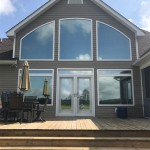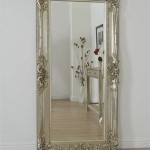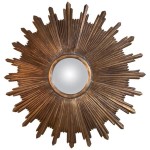How Wide Should a Mirror Be Over a Sideboard?
A mirror strategically placed above a sideboard can significantly enhance a room's aesthetics and functionality. It can create an illusion of spaciousness, reflect light, and serve as a decorative focal point. However, choosing the correct mirror size, particularly its width, is crucial for achieving a balanced and visually appealing look. This article explores the factors influencing the ideal width of a mirror placed above a sideboard.
The most fundamental principle to consider is the relationship between the mirror's width and the sideboard's width. A common guideline suggests the mirror should be narrower than the sideboard, typically occupying between two-thirds and three-quarters of the sideboard's width. This proportion prevents the mirror from overwhelming the sideboard, allowing the piece's design and any decorative items displayed on it to remain prominent.
However, adhering strictly to this rule isn't always necessary. Certain design choices may call for a different approach. For instance, a smaller mirror can be used if the intent is to highlight a specific decorative element on the sideboard, such as a striking vase or sculpture. Conversely, a larger mirror, approaching the sideboard's width, can be employed to maximize light reflection and create a greater sense of space, particularly in smaller or dimly lit rooms.
The surrounding wall space also plays a significant role in determining appropriate mirror width. Ample wall space flanking the sideboard allows for a wider mirror without appearing cramped. Conversely, limited wall space necessitates a narrower mirror to maintain visual balance. The objective is to integrate the mirror seamlessly with the surrounding environment, ensuring it contributes to the overall harmony of the space rather than dominating it.
The mirror's shape and style should be considered alongside its width. A large, ornately framed mirror might overwhelm a smaller sideboard, even if its width adheres to the recommended proportions. In such cases, a simpler, less elaborate frame or a smaller mirror might be more appropriate. The goal is to create a cohesive look where the mirror complements the sideboard's style and the overall room decor.
The height of the ceiling and the sideboard itself influence the perceived size of the mirror. In rooms with high ceilings, a wider mirror can be used without disrupting the visual balance. Conversely, lower ceilings often benefit from narrower mirrors to avoid a visually cluttered appearance. Similarly, a taller sideboard generally allows for a wider mirror, while a shorter sideboard might require a narrower one.
Functionality also plays a role in determining the mirror's dimensions. If the mirror's purpose extends beyond decoration to include practical uses such as checking one's appearance, a wider mirror might be preferable. However, if the primary function is decorative, a narrower mirror can suffice. The intended use should be considered alongside the aesthetic factors to ensure the mirror effectively serves its purpose.
The overall style of the room should inform the choice of mirror width. A minimalist room might benefit from a sleek, narrow mirror, while a more ornate or traditional space might accommodate a larger, more decorative mirror. The mirror should harmonize with the existing décor, enhancing the room's overall aesthetic rather than clashing with it.
Lighting conditions within the room are another crucial factor. A wider mirror can effectively amplify natural light, making a room appear brighter and more spacious. This is particularly beneficial in rooms with limited natural light. Conversely, in brightly lit rooms, a narrower mirror might be sufficient to avoid excessive glare.
Ultimately, choosing the right mirror width involves a careful consideration of various interacting factors. While guidelines provide a helpful starting point, the ideal width depends on the specific context of the room, the sideboard's characteristics, and the desired aesthetic effect. Careful planning and visualization are essential for selecting a mirror that enhances the room's overall design and functionality.
Experimentation can be beneficial. Consider using paper templates or cardboard cutouts to visualize different mirror sizes above the sideboard. This allows for a practical assessment of how various widths impact the visual balance and overall aesthetic before committing to a purchase. This hands-on approach can help ensure the chosen mirror complements the sideboard and the room's design perfectly.

Dining Room Update Vertical Vs Horizontal Buffet Mirror

Dining Room Update Vertical Vs Horizontal Buffet Mirror

Dining Room Update Vertical Vs Horizontal Buffet Mirror

Dining Room Update Vertical Vs Horizontal Buffet Mirror

Mirror Over Buffet Design Ideas

Dining Room Decorating Dilemma What Would You Do Less Than Perfect Life Of Bliss

Dining Room Update Vertical Vs Horizontal Buffet Mirror

How To Pick The Right Size Mirror Antique Glass Ltd

How Big And High Should A Mirror Be Above Sideboard

Dining Room Update Vertical Vs Horizontal Buffet Mirror








